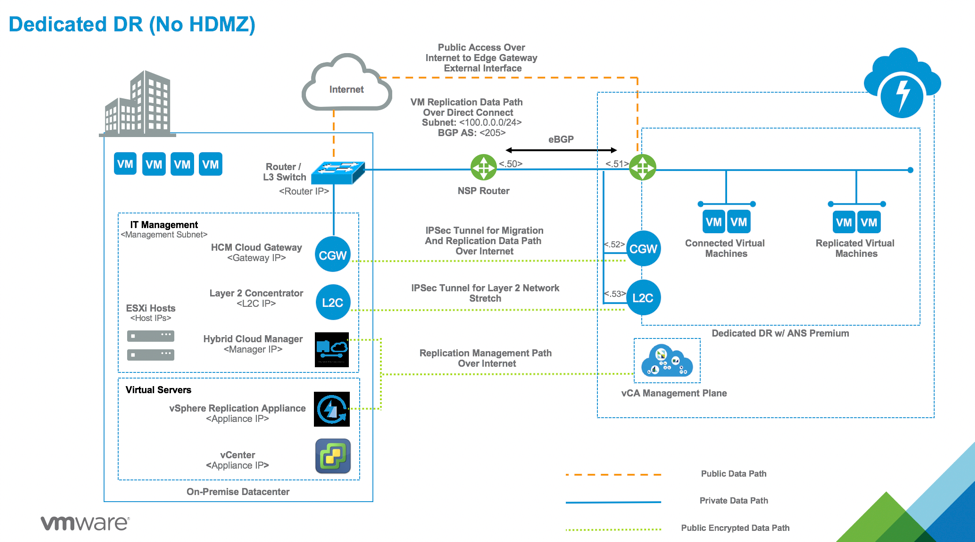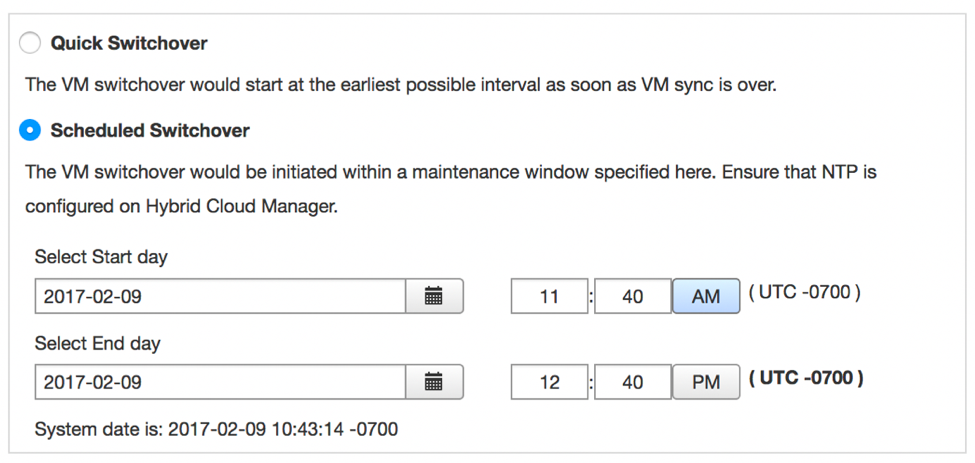Looking for a disaster recovery solution? Have a go at vCloud Air Dedicated Disaster Recovery. Recently announced to the general public, this is VMware’s Disaster Recovery as a Service (DRaaS) solution that combines the best of what VMware has to offer: Dedicated Cloud, Hybrid Cloud Manager, and vSphere-based replication for an enterprise-grade solution that is highly customizable across a variety of recovery point requirements and security objectives.
What vCloud Air Dedicated Disaster Recovery does
vCloud Air Dedicated Disaster Recovery is a scalable and flexible DRaaS solution that quite literally can eliminate the necessity for a secondary datacenter. Yes, really. It is customizable utilizing Hybrid DMZ reference points based on your defined Recovery Point Objectives (RPO) and Recovery Time Objective (RTO) targets. Hybrid DMZ (HDMZ), as you may know, allows you to replicate the architecture in the public cloud that is consistent with your on-premises environment.

Using HDMZ and the storage and networking reference architectures available, you can truly get a custom experience. Further, VMware extends this by offering one of three base configurations as a starting point.
Optimized replication
This option allows you to leverage vSphere replication over a wan-optimized connection for improved performance, leveraging SD-WAN capabilities of Hybrid Cloud Manager. It does not utilize HDMZ. Instead, Hybrid Cloud Manager securely connects between your datacenter and vCloud Air, allowing for replication traffic to flow faster and improves overall RPO.

Two types of protection are available with optimized replication. The first is simple accessibility if your datacenter goes down; the cloud will take over. But if there is an RPO target of 15 minutes, you’ll also see a 15 minute synchronization delay. The second is a planned outage; if a virtual machine is configured for replication, choosing to do a planned migration will work sufficiently to address this cutover.
Taking advantage of replication technology, the VM does an initial sync before performing a delta sync to migrate the virtual machine. You can easily schedule a quick switchover or a scheduled switchover.

Disaster avoidance
VMware vCloud Air Dedicated Disaster Recovery also addresses disaster avoidance through planned migrations with zero or low downtime. VMware’s own tests show 20GB transfers in less than 5 minutes or a 70% reduction in transfer times due to WAN optimization.
This also supports cross-cloud vMotions and end users should not notice downtime. To utilize this capability, hardware version 9 or higher is required. One cross-cloud vMotion can be performed at a time, but others can queue behind them. After completion, the VM is removed from on-premises.
Migrations can also be performed through a cold migration–when the server is turned off. As long as you’ve got hardware version 9 and a stretched network, you’re good to go.
Active-Active application availability
Looking for Active-Active availability groups? VMware’s got you covered too, allowing you to support distributed workloads across different datacenters for distributed protection. VMware vCloud Air Dedicated Disaster Recovery supports mixed modes of active workloads alongside replicated and migrated workloads, ensuring that they can peacefully coexist directly with replicated VMs in the same datacenter.
Mindful of speed and security
VMware’s release is mindful of speed and security, not to mention ease of agile implementation. It also helps avoid significant upfront costs, and in this case, your secondary datacenter. This option of going into DRaaS is a complex issue with many different considerations, especially in highly regulated environments.
With a Dedicated Cloud and Hybrid Cloud Manager, you get physical isolation to meet compliance and licensing requirements. With the stretched L2 network feature of Hybrid Cloud Manager, network portability is supported by SD-WAN and WAN optimized replication pipelines. The recovery cloud is intended to mimic the on-premises solution with the added benefit of datacenter protection.
Photo Credit: Shutterstock, VMware



